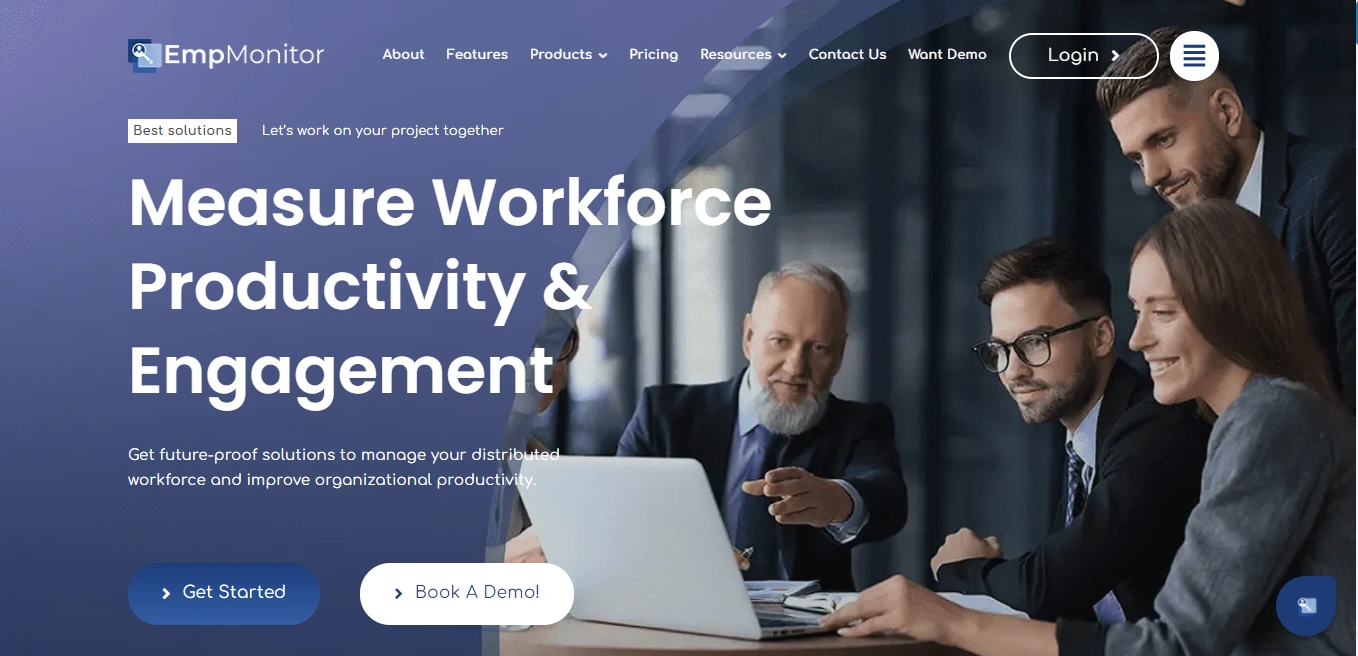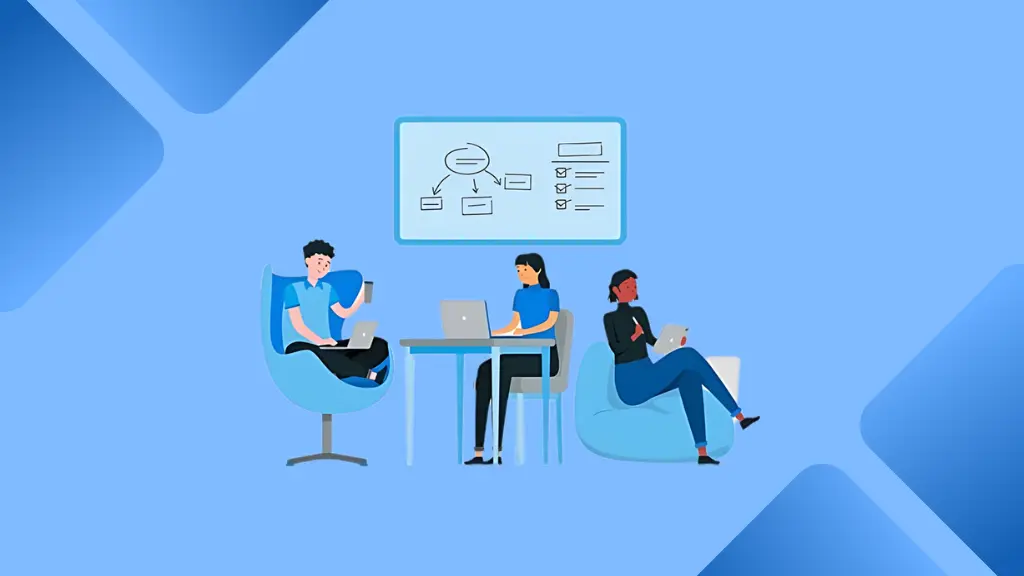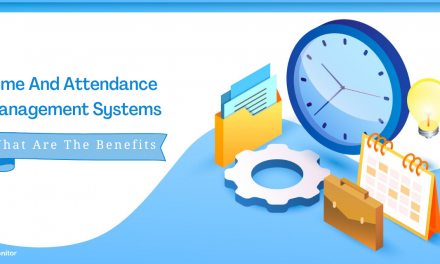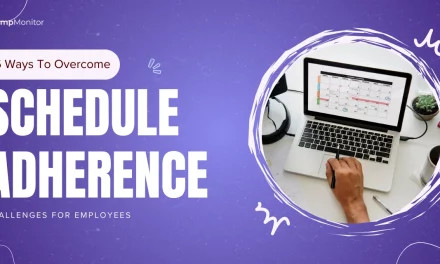Employee feedback is not merely a procedural exercise but a cornerstone of organizational excellence. It involves systematically collecting insights, opinions, and suggestions from employees about their work environment and experiences. This process promotes communication, and transparency, empowers employees, boosts productivity, and drives innovation within the workplace.
While running a business, employee feedback holds considerable importance. Employee evaluation examples are pivotal in shaping company policies, influencing product development, and fostering a positive workplace culture, thereby driving organizational success. Moreover, effective feedback mechanisms are crucial for enhancing employee engagement, leading to improved performance outcomes and sustained growth.
Listen To The Podcast Now!
Understanding The Essence Of Employee Feedback –
Defining Employee Feedback:
Employee feedback encompasses the systematic process of collecting insights, opinions, and suggestions from employees regarding their work environment, experiences, and organizational processes. It plays a vital role as a communication channel between employees and management, fostering mutual understanding and alignment towards common goals. Incorporating various employee feedback examples helps management understand and address specific concerns, leading to a more productive work environment.
Importance of Employee Feedback in Driving Workplace Excellence –
- Enhancing Communication and Transparency: Establishing open feedback channels promotes transparency and trust within the organization, fostering a positive workplace culture.
- Empowering Employee Engagement: Actively seeking and acting on feedback demonstrates an organizational commitment to employee well-being and development, enhancing engagement and retention.
- Identifying Operational Improvements: Employee feedback examples provide valuable insights into operational inefficiencies and areas for process optimization, driving continuous improvement initiatives.
- Catalyzing Innovation: Employee feedback often sparks innovative ideas and solutions, fueling business growth and competitiveness in the market.
- Supporting Remote Employees: Creating a feedback culture for remote employees is crucial for ensuring they feel connected, valued, and heard, despite the physical distance. This helps maintain their engagement and productivity.
Leveraging Technology to Enhance Feedback –
To optimize employee performance and development, it’s crucial to complement productivity tools with thoughtful feedback. While data-driven insights from productivity tools can reveal valuable work patterns, they are most effective when paired with qualitative feedback.
For instance, using tools like EmpMonitor alongside employee feedback examples offers a more comprehensive understanding of productivity trends and employee sentiments. However, integrating these insights with personalized feedback from managers and peers creates a more comprehensive approach to performance improvement. This approach balances quantitative data and personal experiences, leading to more effective feedback and fostering better employee growth and development.
21 Employee Feedback Examples and Their Impact on Workplace Excellence:
Employee feedback is a cornerstone of organizational excellence, shaping policies, practices, and cultures that foster productivity and engagement. Here are 21 examples of how employee feedback impacts workplace excellence:
Employee feedback on Company Policies:
Employees contribute to policies on remote work flexibility, vacation accrual, health benefits, and diversity initiatives, directly influencing adjustments that better meet their needs and enhance satisfaction. For instance, a feedback survey might reveal a preference for more flexible working hours, leading to a change in company policy to accommodate this need.
360 Feedback for Managers:
Collecting feedback from peers, direct reports, and supervisors helps managers understand their strengths and areas for improvement in leadership, fostering better team dynamics and employee engagement. This multi-source feedback can lead to personalized development plans for managers, improving their effectiveness and leadership skills.
Impact of Employee Feedback on Productivity:
Employees contribute ideas on improving workflow efficiency, leading to the implementation of new tools or processes that streamline operations and boost productivity levels.
For example: Suggestions might include using project management software to enhance task tracking and team collaboration. This software helps keep everyone organized and ensures efficient task completion by offering tools for monitoring progress, assigning responsibilities, and facilitating communication.
Feedback in Performance Reviews:
Using detailed employee feedback examples during performance reviews helps in crafting personalized development plans that address specific areas for growth. This process ensures that employees receive clear, actionable advice that guides their professional growth.
Feedback on Training Programs:
Employees offer suggestions for training topics, formats, and delivery methods, ensuring professional development programs are relevant, engaging, and impactful. Feedback might indicate a need for more hands-on workshops rather than purely theoretical sessions.
Feedback on Workplace Culture:
Employees share perspectives on organizational values, communication practices, and inclusivity efforts, guiding initiatives that promote a positive and supportive work environment. These employee feedback examples can highlight areas where the company culture may be lacking and propose ways to improve it.
Feedback on Team Collaboration:
Employees provide valuable input on team dynamics, communication channels, and collaborative tools, facilitating improvements that enhance teamwork and project outcomes. Insights from team members can lead to the adoption of better communication platforms or revised team structures.
Feedback on Customer Service:
Frontline employees offer insights into customer preferences, pain points, and service delivery challenges, influencing customer service strategies that improve satisfaction and loyalty. This feedback can help in refining customer interaction protocols and training programs.
Feedback on Marketing Strategies:
Employees contribute ideas for marketing campaigns, branding initiatives, and customer outreach efforts, driving innovation and effectiveness in marketing strategies. Input from various departments can provide a holistic view of what marketing messages resonate best.
Feedback on Product Development:
Employees provide input on product features, usability, and market fit, informing product development cycles and ensuring products meet customer expectations. Employee feedback examples can lead to enhancements that make products more competitive and user-friendly.
Feedback on Sales Processes:
Sales teams provide feedback on CRM systems, sales training programs, and lead generation strategies, optimizing sales processes to increase conversion rates and revenue. It can result in more efficient workflows and better-targeted sales efforts.
Feedback on IT Infrastructure:
Employees offer suggestions for improving network reliability, cybersecurity measures, and software performance, enhancing overall IT infrastructure and operational efficiency. For example, feedback might highlight the need for faster network speeds or more robust security protocols.
Feedback on Employee Benefits:
Employees provide input on benefits packages, wellness programs, and work-life balance initiatives, shaping policies that support employee well-being and retention. Examining employee feedback examples can result in introducing new health benefits or implementing more flexible leave policies.
Feedback on Environmental Sustainability:
Employees suggest eco-friendly practices, waste reduction strategies, and green initiatives, fostering a corporate culture committed to environmental responsibility. For instance, employees might recommend initiatives like office recycling programs or reduced energy consumption practices.
Feedback on Workplace Safety:
Employees raise concerns and suggestions for improving safety protocols, equipment maintenance, and emergency preparedness, ensuring a secure and compliant work environment. This feedback can prompt the implementation of new safety training sessions or updated emergency procedures.
Feedback on Diversity and Inclusion Initiatives:
Employees contribute ideas for fostering diversity, equity, and inclusion (DEI), guiding initiatives that promote a diverse workforce and inclusive workplace culture. Employee feedback might highlight the need for more DEI training or the establishment of employee resource groups.
Feedback on Cross-Departmental Collaboration:
Employees provide feedback on interdepartmental communication, project handoffs, and cross-functional teamwork, improving collaboration efficiency and outcomes. Insights from this feedback can lead to better coordination tools or more integrated project management approaches.
Feedback on Corporate Social Responsibility (CSR):
Employees share feedback on CSR initiatives, community engagement efforts, and philanthropic activities, aligning corporate values with societal impact and employee engagement. This feedback can help prioritize projects that employees feel most passionate about.
Feedback on Leadership Development:
Employees contribute to leadership training programs, mentorship opportunities, and succession planning, nurturing future leaders and driving organizational growth. It can result in tailored leadership development programs that address specific skill gaps.
Feedback on Work-Life Balance:
Employees provide feedback on workload distribution, flexible scheduling options, and remote work policies, influencing initiatives that promote better work-life balance and reduce burnout. Employee feedback examples might highlight the need for more flexible working hours or additional support for remote employees.
Feedback on Onboarding Processes:
Employees provide feedback on the effectiveness and comprehensiveness of onboarding programs, leading to improvements in how new hires are integrated into the company. This feedback might reveal gaps in training materials, areas where new employees feel unsupported, or aspects of the onboarding experience that could be enhanced to ensure a smoother transition and better initial experience for new team members.
These employee feedback examples show that listening to and acting on feedback enhances operational efficiency and cultivates a workplace where employees feel valued, empowered, and motivated to contribute to organizational success.
EmpMonitor: Workforce Management Software
EmpMonitor is a comprehensive productivity monitoring software designed to enhance team productivity, improve compliance, and bolster security. It enables businesses to make data-driven decisions and optimize operations by offering detailed insights into employee activities.
Key Features-
Employee Monitoring: Track employee activities in real-time, including websites visited, applications used, and time spent on different tasks to assess productivity and identify potential issues.
Time Tracking: Accurately record employee working hours, project-specific time allocation, and overtime to optimize payroll, billing, and project management.
Productivity Analysis: It is a productivity engagement software, that offers comprehensive tools for productivity analysis. Generate detailed reports on team and individual performance, identify productivity trends, and uncover opportunities for process improvement.
Compliance and Security: Monitor employee activities to ensure adherence to company policies, detect potential security threats, and protect sensitive data.
Task and Project Management: Assign tasks, set deadlines, track progress, and foster collaboration among team members to improve project efficiency.
By optimizing your workforce with EmpMonitor and actively seeking employee feedback examples, you can create a high-performing culture where employees thrive and productivity soars.
Best Practices for Establishing Efficient Feedback Systems –
To maximize the impact of employee feedback on workplace excellence, organizations should consider adopting the following best practices:
- Promote a Feedback-Friendly Culture: Foster an environment where feedback is encouraged, valued, and seen as a catalyst for growth rather than criticism.
- Diversify Feedback Channels: Offer multiple avenues for feedback collection, including feedback surveys, town hall meetings, and digital platforms, to cater to diverse communication preferences.
- Act on Feedback Promptly: Demonstrate commitment to improvement by promptly addressing concerns and implementing actionable feedback. Communicate changes transparently to show responsiveness to employee input.
- Provide Feedback Training: Equip managers and team leaders with training on delivering constructive feedback that motivates and empowers employees to excel.
By implementing these best practices and consistently incorporating diverse employee feedback examples, organizations can create a more responsive and effective feedback system that truly supports employee development and organizational success.
Future Trends in Employee Feedback:
As the workplace continues to evolve, methods and technologies for gathering and analyzing employee feedback also evolve. Here are some emerging trends that are shaping the future of employee feedback systems:
Artificial Intelligence and Machine Learning:
AI and machine learning revolutionize employee feedback by offering more sophisticated analysis and insights. These technologies can identify patterns, sentiments, and emerging issues in feedback data that human analysts might overlook. For example, AI-driven sentiment analysis can gauge the overall mood and morale of the workforce by analyzing written feedback and providing real-time alerts to management about potential areas of concern.
Real-Time Feedback Mechanisms:
The trend is moving towards real-time feedback rather than periodic reviews. Developers are creating platforms and apps that enable employees to give and receive feedback instantly, fostering a culture of continuous improvement. Real-time feedback in the workplace promptly addresses issues, enhances communication, and keeps employees engaged by continuously making them feel heard.
Gamification:
Incorporating gamification elements into feedback systems is becoming increasingly popular. Organizations can make the feedback process more engaging and motivating for employees by using game-like elements such as points, badges, and leaderboards. This approach encourages participation, tracks progress, and recognizes achievements in a fun and interactive manner.
Predictive Analytics:
Predictive analytics leverages past data to predict future trends and results. In the sphere of employee feedback, it can forecast potential areas of dissatisfaction, turnover risks, and performance issues before they reach critical levels. This proactive approach enables organizations to implement preventative measures and strategic interventions, thereby maintaining a healthier work environment.
Integration with Other HR Technologies:
Future feedback systems will increasingly integrate with other HR technologies like performance management, employee engagement, and talent development platforms. This integration provides a holistic view of the employee experience, ensuring that feedback effectively informs decisions across various HR functions.
By using these trends, organizations can create more dynamic and effective feedback systems that address current challenges and anticipate future needs, ultimately driving workplace excellence.
Also Read: –
06 TIPS FOR CREATING A FEEDBACK CULTURE FOR REMOTE WORKERS
33+ EMPLOYEE SURVEYS QUESTIONS YOU NEED TO KNOW FOR WORKPLACE IMPROVEMENT IN 2024
9 Tips To Create A Feedback Culture That Fosters Productivity In Your Workplace
Conclusion:
Employee feedback is the lifeblood of organizational growth. By actively listening to employees and implementing their suggestions, companies can create a thriving workplace culture, boost productivity, and drive innovation. Tools like EmpMonitor, when combined with thoughtful feedback, can optimize workforce performance and unlock the full potential of your team. Implementing these employee feedback examples can provide a practical guide to fostering a positive and productive work environment. Remember, cultivating a culture of feedback is not just a nice-to-have; it’s a strategic imperative for long-term success.
FAQs: –
1. Why is employee feedback important in the workplace?
Employee feedback is crucial as it fosters communication, transparency, and trust between employees and management. It empowers employees, enhances engagement, drives innovation, and improves organizational performance and culture.
2. How does employee feedback contribute to organizational excellence?
By gathering insights directly from employees, organizations can identify areas for improvement in policies, processes, and culture. These employee feedback examples enable proactive adjustments that align with employee needs and enhance workplace satisfaction and productivity.
3. What are some examples of how employee feedback can influence workplace policies?
Employees’ input on remote work flexibility, benefits packages, and diversity initiatives can lead to policy adjustments that better support employee well-being and satisfaction. For instance, feedback might prompt changes in leave policies or the introduction of new health benefits.
















